Bollinger Bands
Congratulations on making it to the 5th grade! Each time
you make it to the next grade you continue to add more and
more tools to your traderís toolbox. ďWhatís a traderís
toolbox?Ē you sayÖ Simple! Your traderís toolbox is what
you will use to ďbuildĒ your trading account. The more
tools (education) you have in your traderís toolbox (YOUR
BRAIN), the easier it will be for you to build.
So for this lesson, as you learn each of these indicators,
think of them as a new tool that you can add to that toolbox
of yours. You might not necessarily use all of these tools,
but itís always nice to have the option, right? Now, enough
about tools already! Letís get started!
Bollinger Bands
Bollinger bands are used to measure a marketís
volatility. Basically, this little tool tells us whether
the market is quiet or whether the market is LOUD! When
the market is quiet, the bands contract; and when the market
is LOUD, the bands expand. Notice on the chart below that when
the price was quiet, the bands were close together, but when
the price moved up, the bands spread apart.
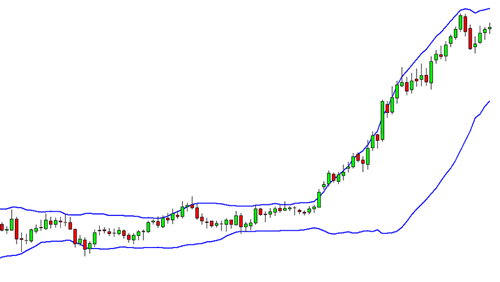
Thatís all there is to it. Yes, we could go on and bore you
by going into the history of the Bollinger band, how it is
calculated, the mathematical formulas behind it, and so on and
so forth, but we really didnít feel like typing it all
out.
In all honesty, you donít need to know any
of that junk. We think itís more important that we show
you some ways you can apply the Bollinger bands to your
trading.
Note: If you really want to learn about the calculations of
a Bollinger band, then you can go to www.bollingerbands.com
The Bollinger Bounce
One thing you should know about Bollinger Bands is that
price tends to return to the middle of the bands. That is the
whole idea behind the Bollinger bounce (smart, huh?). If
this is the case, then by looking at the chart below, can you
tell us where the price might go next?
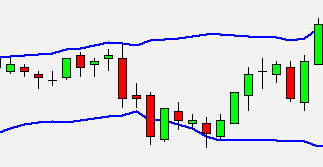
If you said down, then you are correct! As you can
see, the price settled back down towards the middle area of
the bands.
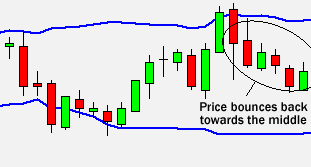
Thatís all there is to it. What you just saw was a classic
Bollinger bounce. The reason these bounces occur is
because Bollinger Bands act like mini support and resistance
levels . The longer the time frame you are in, the
stronger these bands are. Many traders have developed
systems that thrive on these bounces, and this strategy is
best used when the market is ranging and there is no clear
trend.
Now letís look at a way to use Bollinger Bands when the
market does trend.
Bollinger Squeeze
The Bollinger squeeze is pretty self explanatory.
When the bands ďsqueezeĒ together, it usually means that a
breakout is going to occur. If the candles start to
break out above the top band, then the move will usually
continue to go up. If the candles start to break out
below the lower band, then the move will usually continue to
go down.
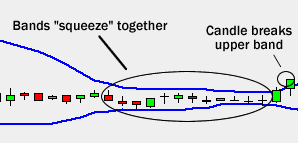
Looking at the chart above, you can see the bands squeezing
together. The price has just started to break out of the
top band. Based on this information, where do you think
the price will go?
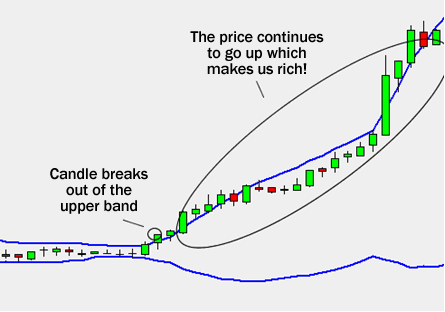
If you said up, you are correct! This is how a typical
Bollinger Squeeze works. This strategy is designed for
you to catch a move as early as possible. Setups like these
donít occur everyday, but you can probably spot them a few
times a week if you are looking at a 15 minute
chart.
So now you know what Bollinger Bands are, and you know how
to use them. There are many other things you can do with
Bollinger Bands, but these are the 2 most common strategies
associated with them.
|